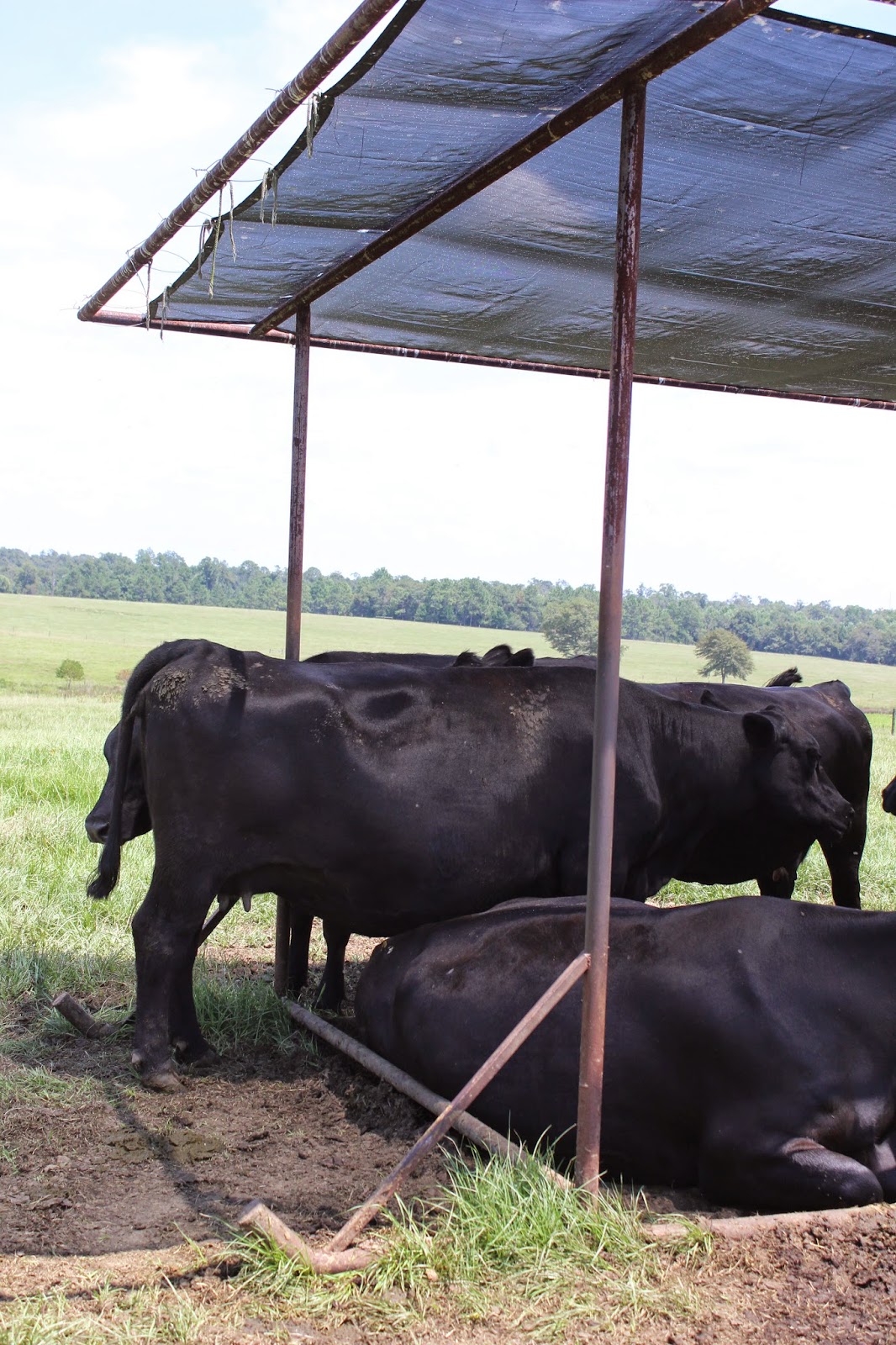It is amazing to me the vast geographic differences we have
in our country. We truly do live in America the Beautiful. These differences were brought to our
attention again on July 23rd when our farm was honored to be
included in the Where’s the Beef tour for the National Association of Extension
Agents.
 |
| Carla Gilmore Welcoming the tour attendees |
It was so nice to meet people
involved in agriculture from all over our great country. A total of 19 states were represented on the
tour.
 |
| Tables all ready for lunch |
Gizmo Angus was the lunch stop, Ronnie
and I along with Carla and Jacob cooked up some Beef Brisket, Potato Salad,
Cole Slaw, and Baked Beans, Rolls and sweet Tea and topped if off with some
banana pudding for desert.
We asked some
of our local FFA youth (Mitchell Singleton, Trever Singleton, Haley Weaver and
Courtney Weekley) to help us out with serving the meal along with my good
friend Barbara Reynolds they did a wonderful job getting everyone fed.
 |
| Thankful for great FFA programs and willing FFA members! |
After lunch attendees loaded up on trailers
for a quick tour of the farm. Ronnie drove one of the tractors while Mike
manned the other Jacob and I were the tour guides on the wagons.
 |
| Mitchell handled the overflow |
One of the things that was of great interest
to a number of folks from the northern states was the shade screens located in
our pastures.
No matter the differences in how we approach this industry the one constant we have found is the people. The people that have chosen agriculture as a way of life are the salt of the earth. I am so thankful that God has given us the opportunity to spend each day working and caring for His land. Wherever your day takes you and however it ends, chances are it began with a farmer.
Many of these folks had
never seen shade screens before, and wanted to take pictures. I started thinking about our trip to Montana
several years back, when I saw my first calving shed, and yes I took
pictures.
We don’t have much need for calving sheds in
Florida but they sure don’t have much need for shade screens in Montana. The vast differences we have in environment
and how each of us adapts to our individual environments is a testament to the
tenacity of the farmer. It is also a
testament to the adaptability of our cattle.
One of the things I talked about on the tour was that we purchased
cattle as embryos from Montana, we have also purchased cattle from out
west. The ET calves develop right along
with the rest of our cattle you can’t tell much difference between western bred
vs. Florida bred. We have found that older
cattle need some time to acclimate to their new and warmer environment.
Over the years we have traveled to a number of farms and gone on
various tours, we have never failed to learn something that will be beneficial
to our operation. No matter where we
have gone we have always found that the people in production agriculture share
so many of the same core values. No matter the differences in how we approach this industry the one constant we have found is the people. The people that have chosen agriculture as a way of life are the salt of the earth. I am so thankful that God has given us the opportunity to spend each day working and caring for His land. Wherever your day takes you and however it ends, chances are it began with a farmer.
















